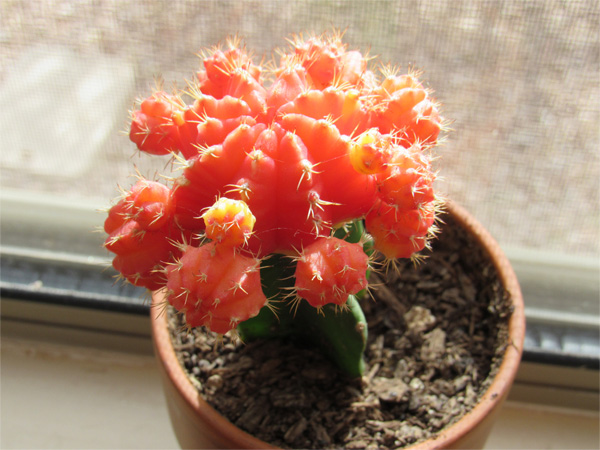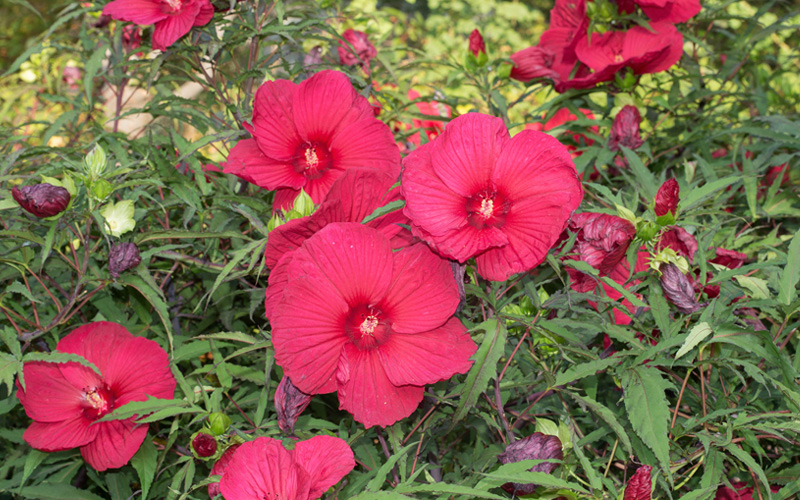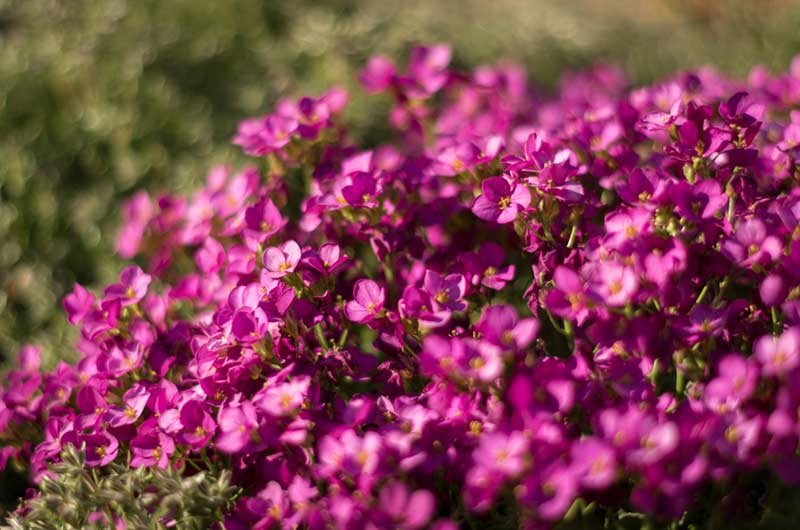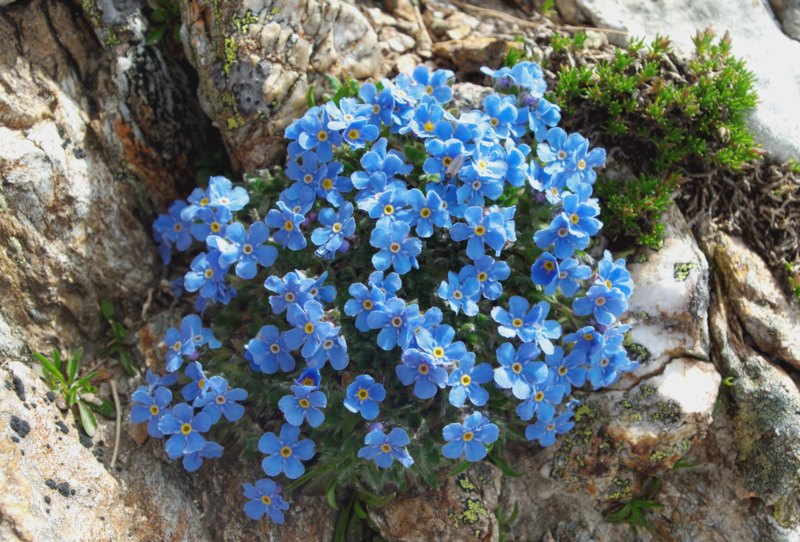Forget-me-nots are a member of the Boraginaceae family and are not the only species with the signature name. There are a few different variations, such as the Chinese Forget-me-nots, and they feature the same tiny, bright blue flowers.
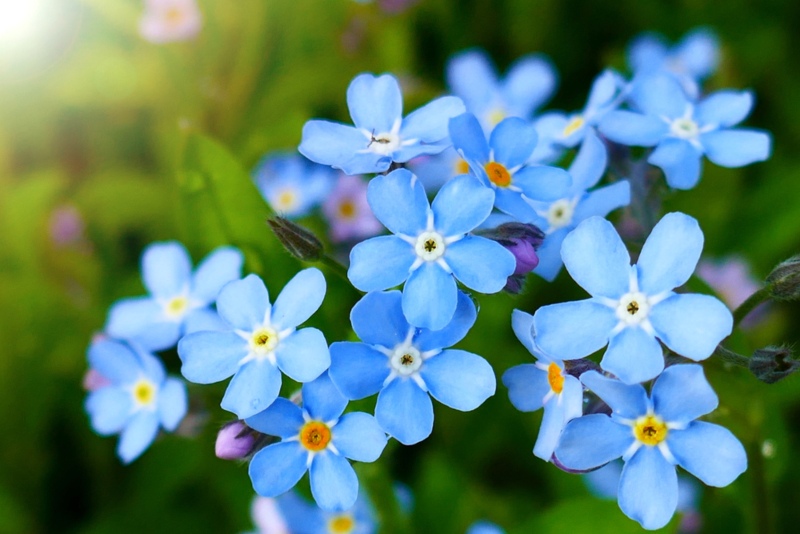
The flowering plant got its common name from the direct German translation of its botanical name, Myosotis sylvatica. Because of this naming, the plant has become a symbol of significance for Alzheimer’s patients and family members.
The plant is incredibly versatile concerning temperature, climate, and planting location. For example, you can plant forget-me-nots in your yard or keep them in a pretty spot on your mantle inside. However, if planted outside and treated as an annual plant, the forget-me-not can become invasive since it grows and spreads rapidly.
If you treat it as intended, a biennial plant, the forget-me-not is short-lived since it only blooms in the spring, typically between April and May.
| Botanical Name: | Myosotis sylvatica |
| Common Name(s): | Forget-me-not |
| Plant Type: | Biennial |
| Mature Size: | 12-inches |
| Sun Exposure: | Full sun or partial shade |
| Water Needs: | Low |
| Soil Type: | Moist, fertile, well-drained |
| Soil pH: | c6.0-8.0 |
| Bloom Time: | Spring |
| Maintenance: | Low |
| Flower Color: | Blue |
| Hardiness Zones: | 3-8 |
| Toxicity: | Non-toxic |
Forget-Me-Not Care
You can find forget-me-not species everywhere, from the wilderness of Alaska to a rocky hillside in West Virginia. The plant is common and sometimes considered invasive. However, when given correct and adequate care, the forget-me-not can flourish like a beautiful addition to your home’s backyard or even indoors as a house plant.
Ensure your forget-me-not gets the correct care to grow with a few fundamental care tips, including light, soil, water, location, and propagation.
Light
The amount of light the forget-me-not needs depends on its location. If you plan to plant it and live in a Northern area that’s more prone to cooler weather, you’ll do best to provide the forget-me-not with full sun.
On the opposite end of the spectrum, and you live in a Southern region with a warmer climate, you might want to give the plant some reprieve from the harsh sun with partial shade in the afternoon.
Water
You do not have to water forget-me-nots frequently if you live in an area with frequent rainfall. The plant can tolerate wet soil but primarily prefers moist soil rather than weekly douses. Therefore, if you plan to grow the forget-me-not in a container, you only need to ensure the plant has consistently damp soil.
If you plant it outside, you likely don’t need to check on the soil moisture levels unless you experience a period of unexpected drought.
Temperature and Humidity
Forget-me-nots can grow in pretty much every region of the United States because of its versatility and low-maintenance care. However, since it requires moist soil, it might grow better in humid climates where it can get consistent moisture.
That said, the plant can tolerate mild to cooler temperatures. Therefore, it will only need some adjustment to the sunlight depending on your region’s temperature to keep healthy and happy.
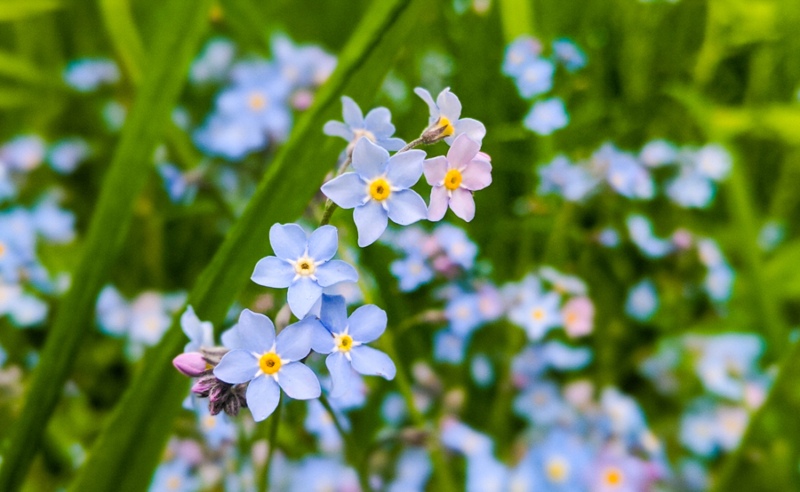
Soil
Similar to light and water, the soil for forget-me-nots depends on your location. The plant does well in various soil types, including sandy, clay, loam, and organically rich. Whatever soil you have access to, you only need to ensure it is well-drained or in a well-draining spot, whether that’s in the ground in your yard or a pot.
You’ll also want to check the soil regularly to ensure it’s retaining enough water to keep the plant moist but not wet. On the other hand, you do not want the earth to be too dry.
When tending to the soil, you’ll also want to apply fertilizer either once or twice a season in the spring and fall to keep your Forget-me-nots growing and healthy with added nutrients.
Toxicity
The forget-me-not, Mysotis sylvatica does not pose a threat to you, your kids, or your pets. The plant is completely harmless. However, some different types of forget-me-nots are toxic and hazardous if ingested. Toxic forget-me-nots include Myosotis scorpiodes and Cynoglossum amabile (Chinese forget-me-not).
The three forget-me-not plants look nearly identical but differ in their blooming schedule and native landscapes. Therefore, to differentiate between the three and decipher which plant you have concerning toxicity, it would be best to look at the botanical name before purchasing.
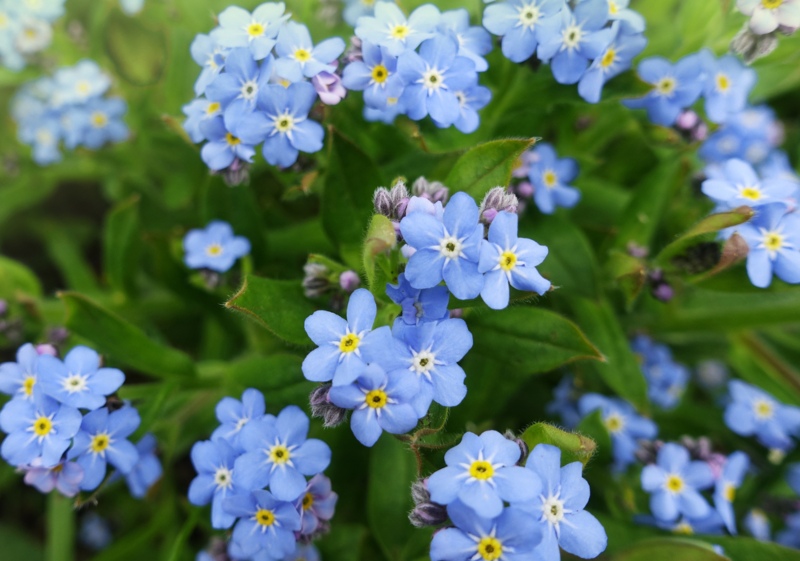
Propagation
Forget-me-nots, if left to their own devices, will seed themselves. However, you can propagate them through division and cutting. For instance, if you want to reproduce the plant via cutting, you can trim the stems in the summer and plant them for the next blooming season.
You can also divide the rhizomes manually before the plant blooms. Although, keep in mind that you should only divide the forget-me-nots every three to five years.

